This is the second part of a two-part series focused on building voter guides for local elections. The first part, How to Build a Voters’ Guide for School Board Elections, came from Frank Strong, who has created these incredible election tools for Texas voters since 2022. Part two of this series focuses on building a voter guide for local public library board elections. Note: the terms “board of directors” and “board of trustees,” as well as the words board, directors, and trustees, are used interchangeably here, as different public libraries call the body of people who oversee their big picture operations, budgeting, administrative hiring, and policy making.
For the April 1, 2025, Illinois Consolidated Elections, I created a voters’ guide to contested public library board elections. This wasn’t the initial plan; I intended to cover all the boards with elections. But the effort was Herculean, even with a group of dedicated volunteers, and ultimately, it wasn’t the guide’s goal. So rather than try to cover every public library election on the ballot, I focused exclusively on those elections where there were more candidates than open positions (that is, they were contested elections).
One thing worth emphasizing before diving in, though, is that the goal of this project was fact and information, not perfection or completionism. I knew from the start that I would not have information for every library in the state because Illinois is a big state with many rural communities whose information isn’t as easy to access as suburban or urban areas. Setting aside perfectionism in exchange for accuracy was crucial.
Here’s what I did to create a voters’ guide to public library board elections and how I did it.
Plan Your Guide Based on the Election Date
A couple of preliminary steps are worth mentioning since they will impact everything going forward. First: find out when your next library board elections will be held and plan to have your voter guide prepared a couple of weeks in advance. This will give you a personal deadline for when you need your information to be as updated as possible. You don’t want to have your guide available too early, as you’ll miss a lot of information about candidates in the weeks leading up to election day. Groups like the League of Women Voters often hold candidate forums two or three weeks before an election, and local newspapers begin publishing candidate questionnaires then, too–assuming you have local newspapers covering these municipal elections. You can learn a lot from these; providing links to recordings or articles is extremely helpful in your guide.
Then, build your timeline and project around your available time and energy. For the April 1, 2025, election, I began my work in December 2024. Though information about candidates on the ballot wouldn’t be available until late February, this gave me a lot of lead time to do some preliminary research. I did this project in addition to working full time, parenting, and other things, putting in probably 3-5 hours a week at the beginning and closer to 7 or 8 as the election got nearer. Find people to help you with some of these tasks, and/or get more local on your guide to make the lift easier. State library advocates helped me develop a school board election guide similar to Frank’s, while I put together the public library guide myself. Illinois has fewer public libraries than school districts, so this was doable.
Look for A List of All The Public Libraries In Your State/Region
Find out if there is a spreadsheet you can either download or save to Google Drive that already has a list of all the public libraries in your state. I did this by searching public libraries + Illinois + xls. This brought up a document from a reputable source covering nearly every state public library, along with its address, city, and county. While building the voter guide, I discovered the document was a little outdated. That is fine–it’s easier to add and delete when you’ve got a lengthy document to work from than it is to develop the lengthy document from nothing.
If your voter guide will be more targeted to a county or community, edit your document so that only that information is viewable. Otherwise, the document might become too overwhelming. I also found it helpful to collapse libraries with several branches into just one library (e.g., the two branches of the Naperville Public Library were updated to be one library in one cell since the board for that library oversees all of its branches).
Research How Library Board Members Are Selected In Your State/Region
From here, you’ll want to find out how public library boards in your area of research operate. Not every public library in the nation has a board, though most do. Find out whether those boards are elected or appointed. In some states, like Illinois, both happen.
To find some of this information, look into your state library trustee association or the state library trustee manual. If you’re seeing no definitive answer, it is worthwhile to look at the individual webpages of several public libraries in your state. You may notice they outright note trustee terms and the method by which trustees are put onto the board (i.e., “elected 2023-2027” or “appointed 2023 to a two-year term”); always check multiple libraries, though, since it can vary library to library within the same state. Some information may also be found on city or county webpages, where the library’s website may be housed.
If you’re not finding information on the library’s website, find their trustee bylaws. Often, the information can be gleaned there. Not finding anything helpful with any of these research routes? You can always look at the county’s election results for the last several years and see if library board elections are listed in the results.
Every library in Illinois was a little different. This is where having a spreadsheet was handy. I went through the entire list of libraries and researched whether they were elected or appointed. Yes, there were times this information could not be found; in those cases, the cell was left blank.
For libraries that had elections for trustees, I marked down how many of the positions it appeared would be on the next ballot and how long those terms would run (i.e., 2 years, 4 years, or in some cases, 6 years). This information will be imperfect and incomplete, but it will help get a sense of which libraries were having elections in 2025.
Building The Guide
In Illinois, information about the candidates running for library board elections was unavailable for the April 1 election until late February. In some cases, especially in smaller counties, that information was not available until closer to mid-March (if at all). Your best source of information for local elections, like those at public library boards, is through the county. This is where having counties listed in your spreadsheet beside the library name can be helpful–you might discover, for example, a rural county in your state doesn’t have information, and that’s worth noting in a guide.
As information about candidates running for offices is released, go through your list and add that information. For the Illinois guide, I verified and/or updated the number of open board positions on the ballot–something that was easier to find on sample ballots than on straight lists of candidates, but your mileage may vary–as well as the length of those terms. In Illinois, the length of the public library trustee term varies by library, as it’s in the code that those terms can be 4 years or 6 years in length. But sometimes, a board member leaves their position before their term expires, leaving an unexpired two-year or four-year term available in the election. (Yes, this is getting in the weeds, but seeing two people run for a single two-year term and three people running for four four-year terms is distinct on the ballot itself).
The information I included for each library was as follows:
The number of available board seats The breakdown of those available seats (four 4-year full-term seats, two 6-year full-term seats, two unexpired 2-year terms, etc.) The name of each candidate running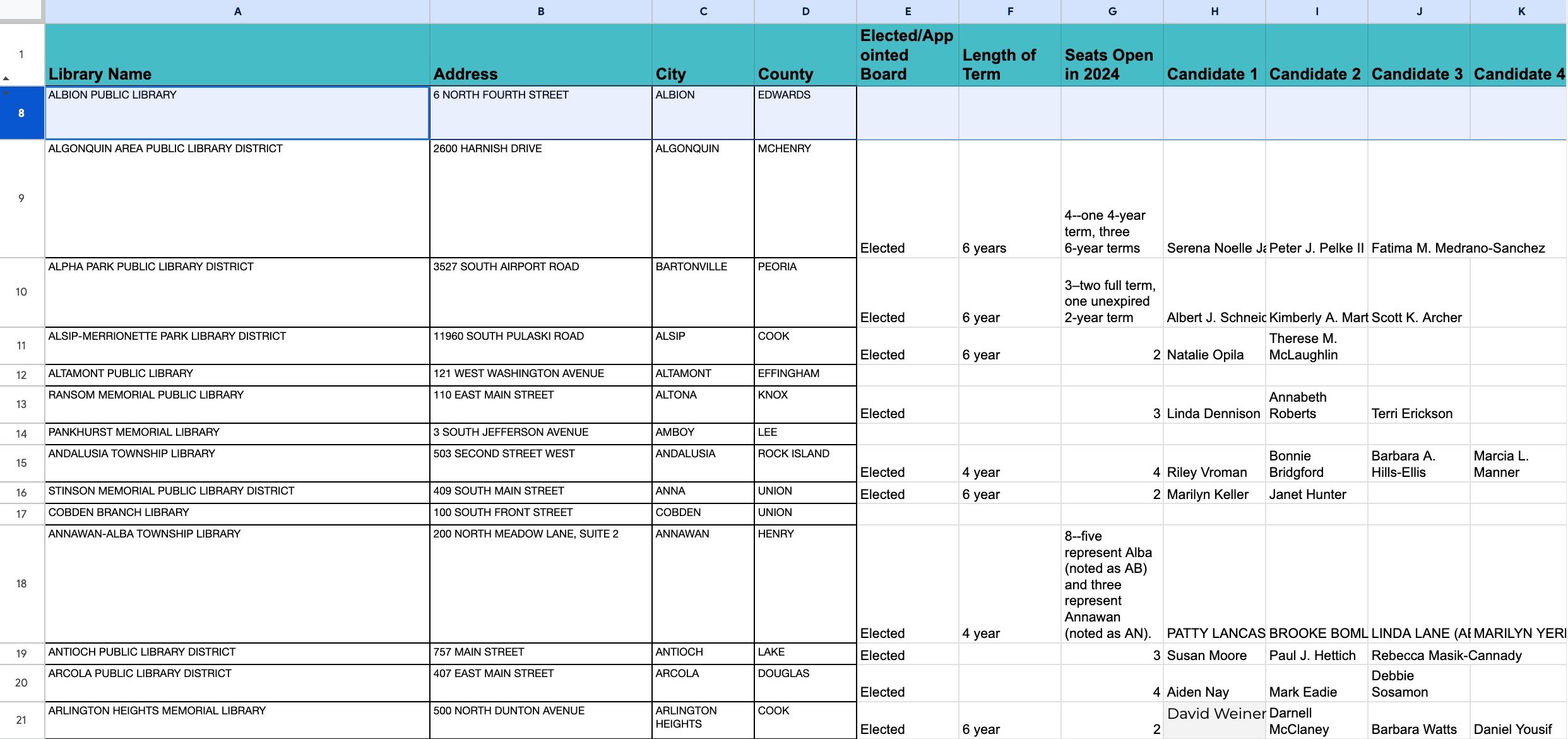 |
Once this was done for a library, I went to that library’s website and determined whether or not any of the candidates running were already serving on the board. These incumbents were highlighted with an (I) beside their name. Incumbency can be a helpful factor for voters–if someone’s been on the board, they have a voting record that can be viewed in publicly available minutes and meeting recordings.
In cases where several full terms and unexpired terms were on the ballot, I made a note in a separate cell indicating who was running for the unexpired terms.
This part of the process took a long time and was cumbersome. Every county presents information about its election differently, and some counties have never updated their website with this information at all. Some counties exclusively posted their sample ballots on Facebook, while others created slick dropdown menus that made plugging and chugging information quick and easy.
Something I found really helpful was having a separate tab in my spreadsheet that listed all of the counties in the state. Going county-by-county was much easier for following up on information than going library-by-library. As I gathered as much data as possible in a county, I marked it done and moved on. Several counties in Illinois never provided information, which I could then note in the voter’s guide.
To find county elections information, you can either turn to a search engine with the query [name of county] election information/or you can seek out that county’s county clerk, who oversees elections. This is where I discovered some counties rely far more on a Facebook page than an actual webpage for distributing election information.
Information nerds will relish this part of the process because it gives you a sense of how different each county is regarding elections and its internet presence. I am still curious why the Pink Panther and the color pink are front and center for Johnson County, Illinois’s elections page, which, as you’ll see, has not been updated since November 2024.
Of note: if you find contradicting information in your research, sample ballots for the election will be your most authoritative source. For example, you might see four open board seats in your research, but the ballot shows only three. Go with what the ballot says.
Determining and Sharing Information Voters Will Find Useful
Once you have gathered as much information as possible, open up a blank document to begin your guide. You can do this in whatever way makes sense to you and your target audience. For the Illinois guide, I found that listing every library election made no sense. Instead, I highlighted only the contested elections–races with more candidates than open positions. Rather than creating a document with hundreds of elections, I could focus on just a few dozen.
I created a heading for each contested election with the library’s name and location. I included the available seats and terms, noting if, where, or how unexpired terms were involved. Here’s what that looked like:
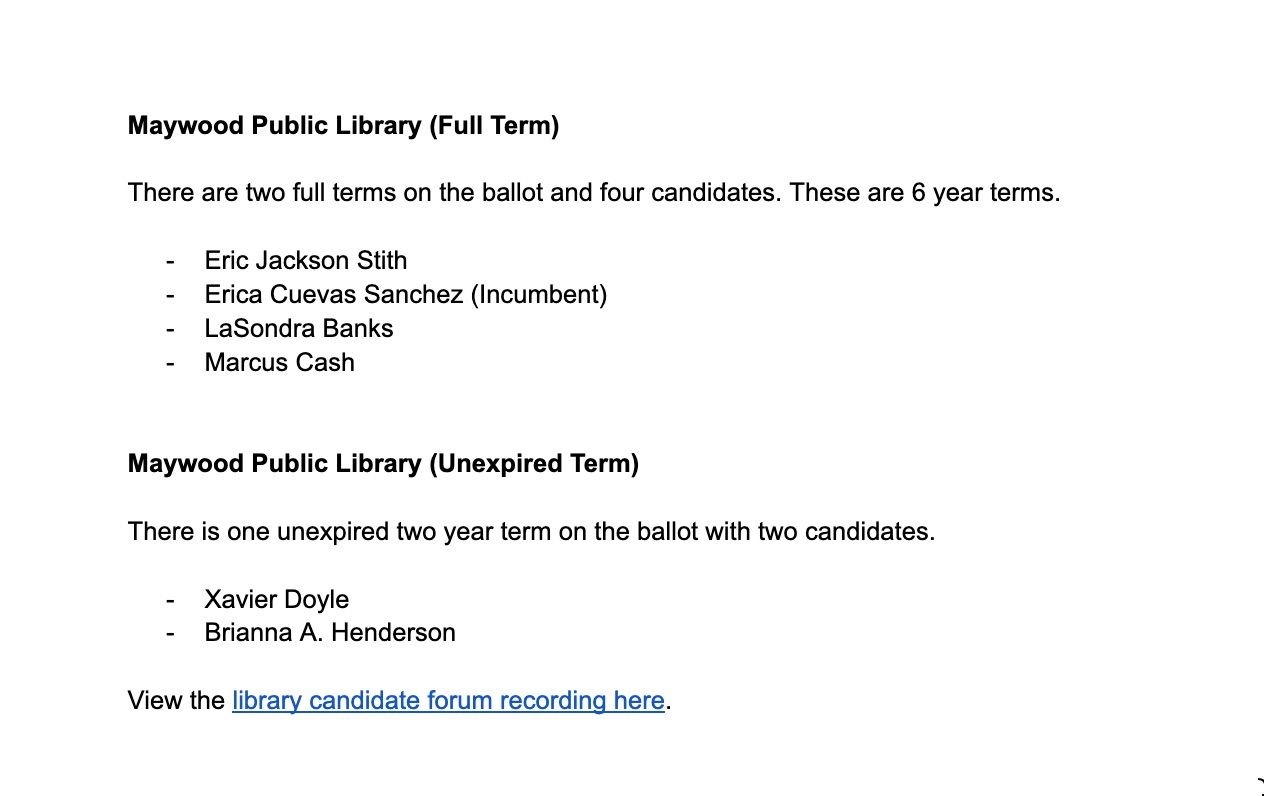 |
My initial goal was to create a guide with three colors associated with each candidate: green for good, yellow for little known about them, and red for no-go. However, the lack of information about some of the candidates made this cumbersome and, at times, downright impossible.
I opted instead to include the following information beside each candidate and/or each library:
Whether or not the candidate was a librarian (while not always indicative of being pro-library, this information was helpful for doing some research on their work history) Links to recorded candidate forums Links to any interviews done by an outside party Links to official candidate Facebook pages or candidate websites Anything else that may have popped up when doing a basic search of their name and the library for which they sought a trustee seat.In some cases, I could highlight a candidate’s name in green, yellow, or red, but this was rare. Most of the time, I only included information for users to access and view for themselves.
Here are a few examples of what the guide looked like with that information:
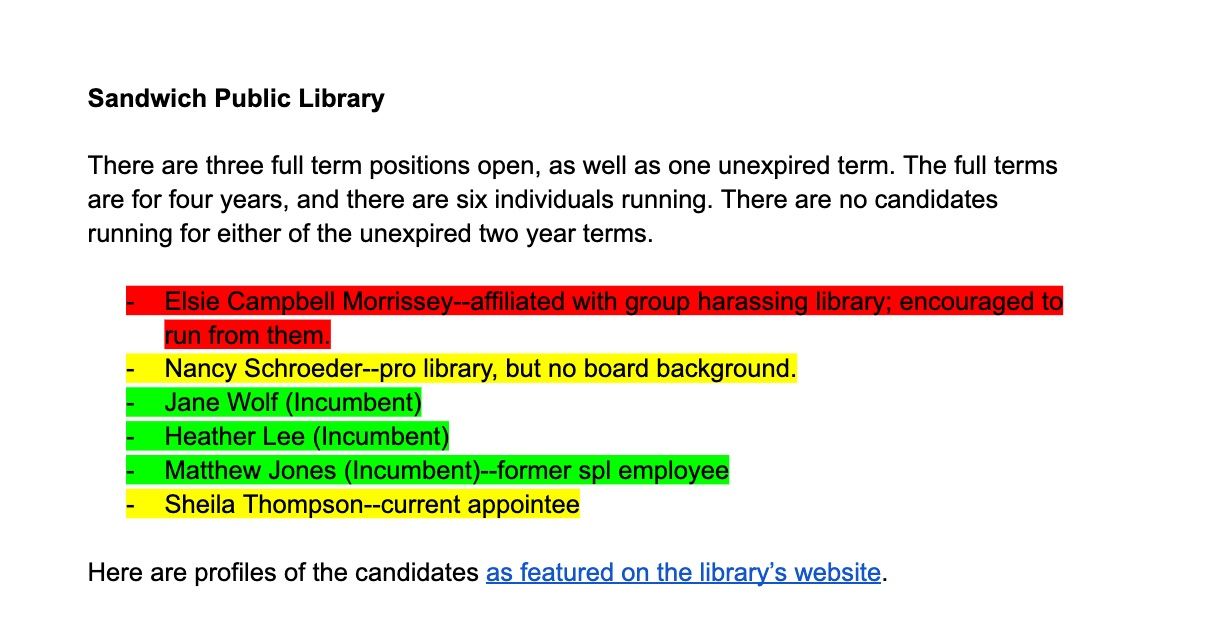 |
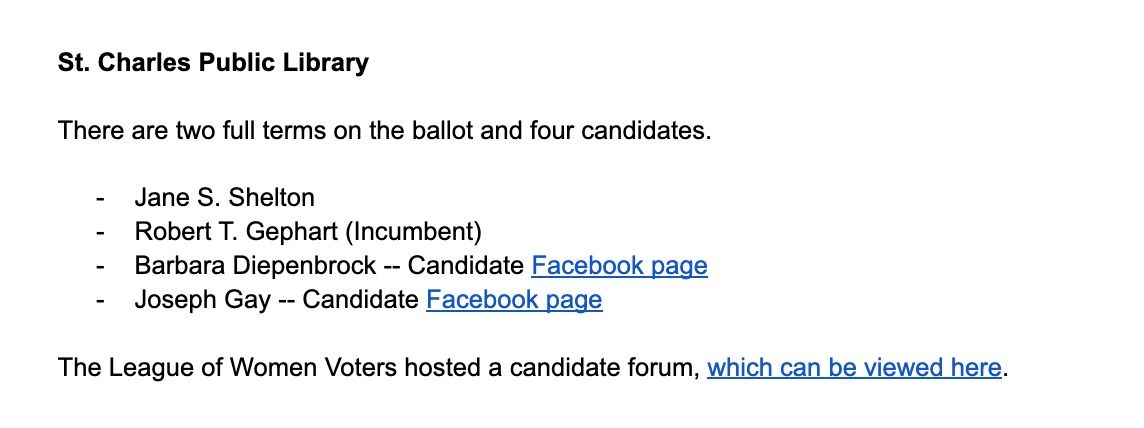 |
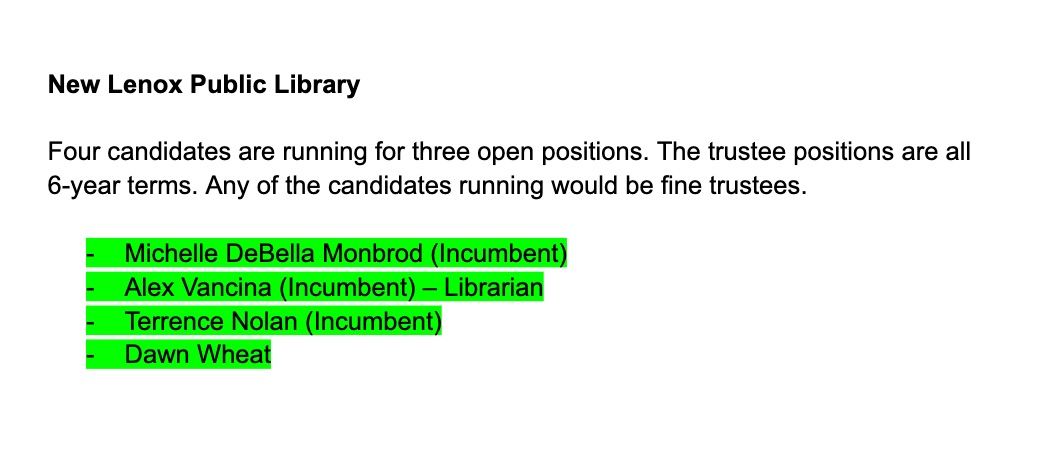 |
As I went through this process, I took notes on what information I wanted to convey to someone who reads the guide. What should they know about what is and is not included? For example, I noted the counties where I found no voting information and thus, they were not able to be included in the guide; that the guide was to contested elections only; and that some contested elections were only for full terms or unexpired terms and that that was noted beneath the name of each library.
This is what the guide’s introduction looked like:
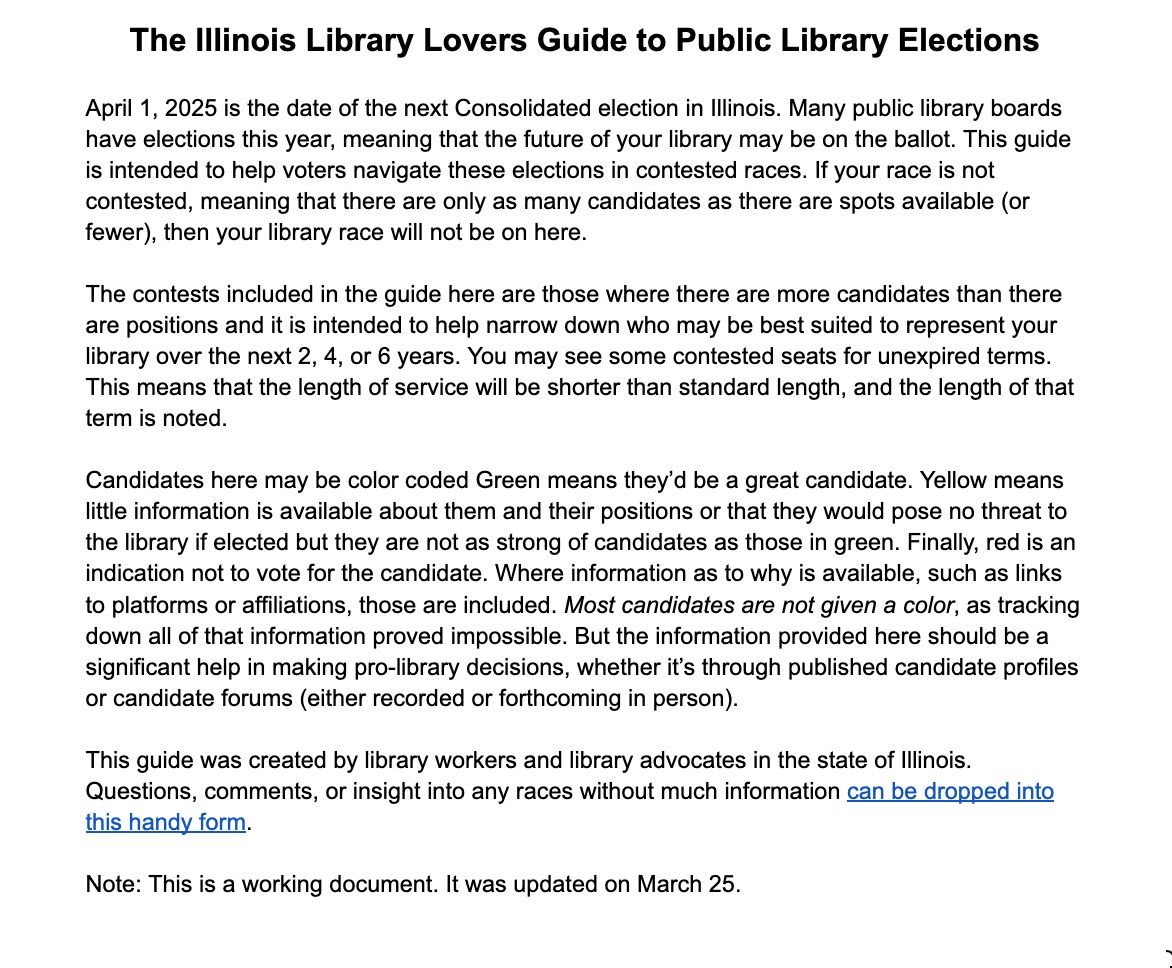 |
Documentation and First-Hand Insight into Elections
Once you’ve entered all the data into your spreadsheet and begun building the actual document for voters, where do you find the information? This will be the most time-consuming part of the project and may provide the least helpful insight.
Start by looking to see if any candidates have their own website or official candidate Facebook page. In what might feel backward to some, I recommend starting your search on Facebook with the candidate’s name and location, rather than going to a search engine. If you pull up something, you can often find more links, including to their official websites, on those Facebook pages. In some cases, you might find a candidate’s personal page; you can use that for your searching or note-taking purposes, as well as an opportunity to track down any local issues you might not be familiar with. This helped me determine why a teeny Illinois library had 12 candidates running for six open seats. Turns out that some of the candidates were angry at the library for becoming a district library in the previous election “without their knowledge” (it was on the ballot in a previous election).
From there, look for profiles or interviews from the candidates. These may be in local news, on local Facebook pages related to politics or elections, or even on your library’s website (psst, public libraries: posting questionnaires of your trustee candidates on your trustee website is tremendous public service and it is nonpartisan).
Search for candidate forums held locally as well. Both in-person and virtual forums will tell you when they’re being held, and you can include that information in your guide. You can also use this information to develop a set of questions you’d like to ask or have asked at these forums. Ask library candidates where and how they plan to protect the freedom to read and where or how they have advocated for restoring vital IMLS funds. Answers to these questions will tell you a lot, and you can include those answers (or your takeaways of the candidates based on those responses) in your guide.
If these events have passed, see if there are recordings that you can include.
What you’re doing here is collecting as much publicly available information as possible and organizing it so voters have it readily accessible.
Depending on your guide, you may have personal connections you can tap for additional information. Ask permission to ask those questions–recall that anything on emails connected to public institutions like libraries or schools is subject to FOIA–and request permission to share any information that may come from these conversations. I talked with library colleagues for my guide, which helped clarify why some libraries had such heavy candidate pools for a few open seats. It wasn’t that there was interest in a takeover or frustration with the library’s policies. The recruitment of good candidates was highly effective (and everyone wins when every choice for trustee is good!).
Other Helpful Ideas
I took inspiration from Frank Strong to create my guide, though my guide looks and feels quite different from his. That’s okay! You can take any ideas here that resonate and use them to build the guide you think would be helpful for your local elections.
Getting the word out about your guide is the next hurdle. Once you have the information compiled and feel ready to release it, share it with your friends, social networks, neighbors, and any groups you might be involved with that care about democratic institutions. I got so much great feedback from people I’ve known for my entire life who never knew how important these elections were, as much as I also got great feedback from folks who’ve been tapped in their adult lives.
Be open to feedback. I created a Google Form and let folks who accessed my voter guide share their insights and the information they had. This helped get me some recordings and candidate profiles I may never have found otherwise. Certainly, there were some unhappy comments, but there was no need to address those. Folks were welcome not to use the guide as much as they were welcome to find value in it.
One of the things I thought was especially important when the election was over was to recap how the night went for the very public libraries I’d initially created the guide to cover. This look at the results was helpful in thinking about what libraries are worth watching across the state. To do this, I perused the results the day after the election and focused exclusively on those contested elections. It took a little time, of course. Still, because it was a handful of results, rather than results from across the whole state, it was easy to review, reflect, summarize, and share with those who had a vested interest in Illinois public library elections. I didn’t create any new tools here. I just copy-pasted the old one and updated.
Hopefully, the work Frank has done or my work will help inspire you to consider where or how you might be able to develop useful guides like this. Maybe you can’t cover a whole state–that’s tremendous work. But perhaps you can do it for your county or your town. If multiple people are building pro-library/pro-school guides at once, that’s okay. There’s an opportunity to collaborate on those guides if you connect with one another.
Book Censorship News: May 30, 2025
Psst: it’s time to start tracking attacks on Pride-related programs, book displays, and library collections. If you’ve experienced censorship or targeted attacks related to Pride leading up to June or anytime throughout June, please document that here. It’s anonymous and will be used to catalog the ongoing attempts at Pride-related censorship (see 2023 and 2024 roundups).
Mason City Public Library (IA) has two books being challenged by local Moms For Liberty members, and the community isn’t happy about it. Sex Is A Funny Word and Let’s Talk About It are the two books because these folks are not creative and don’t do their own work. The latest from the ongoing battle over who oversees and funds the Samuels Public Library (VA). “A Beaufort County judge declined to dismiss a lawsuit brought by a Hilton Head Island Middle School teacher against an outspoken parent over claims of “grooming” related to a classroom reading assignment.” This is good news. We obviously don’t want anyone being called such horrific things, but the fact that the teacher’s lawsuit can go forward is positive. Book censorship has been happening in Canada as long as it has been in the US, though at a much quieter rate. Now, Alberta wants to create “age-appropriate” standards for school library books. You know it’s queer books they’re targeting. A parent in the Kenmore-Tonawanda Union Free School District (NY) is seeking to have 27 books removed from the schools. This story may be paywalled. The New York State Senate passed the Freedom to Read Act and the Open Shelves Act, which would deter book banning in the state. It’ll continue through the legislative process, though the session is getting closer to its break. Delaware’s anti-book ban bill has passed the House. “A grant that would help Wake County schools [NC] promote Banned Books Week is drawing complaints from some conservatives that it’s actually meant to get sexually inappropriate books in the hands of students.” Sigh. Escambia County Schools (FL) want to make the book review banning process go quicker. Recall this district has been involved in two court cases over book banning. One of the many book ban bills being heard in Texas this session is Senate Bill 13. Parents have been nonstop in pushing back, including showing up to demonstrate against the bill on Memorial Day–a holiday on which an important hearing on the bill was held. Convenient. The bill has passed out of the House as of writing, but the fight isn’t over (and where/how this bill will be squared with the Texas Reader Act, currently still in the court system, is a question mark). The Home Ministry in Malaysia has banned seven books in the country, including Ali Hazelwood’s Love, Theoretically. (Note: I do not know the bias or leanings of any Malay media, but this looked to be the most factually based.) The judge overseeing the case of Moms For Liberty Wayne County and a local religious leader against the Clyde-Savannah School District in New York dismissed the case. In her decision, the judge wrote that she would be “hard-pressed to find that the (State Education) commissioner (Betty Rosa) acted arbitrarily and capriciously when (she) sustained the school board’s resolution to retain the books.” The book banners won’t appeal the decision, at least as of writing. New leveled access cards are coming to Corpus Christi Public Library (TX). This is the “compromise” over banning vast swaths of books in the library. But it’s likely we’ll see that happen as well. Zionsville Public Library (IN) is already hearing complaints from the local bigotry brigade about its Pride-themed programming. As a result, the library has already changed at least one program. Anti-library legislation in Alabama has officially died, and a big thanks for that goes to the on-the-ground library advocates. Patmos Library in Jamestown, Michigan, is once again open. This library was defunded twice, then got its money back, and then shut down a couple of weeks ago when five staff members quit after feeling stifled by the board in doing their jobs. The Manchester, New Hampshire, school board is asking the governor not to sign the bill allowing rampant book banning in schools statewide. Christian County Library (MO) has been under siege by far-right book banners for a while. This story is about why they threw out the idea of labeling content. But the really interesting part here is the lack of discretion about this being blatantly political. We know this, of course, but we have it documented, too. The Alabama Library Association is very confused about the new orders from the Alabama Public Library Service, which effectively bans entire swaths of gender-themed books. Speaking of Alabama, the book banning bigots of Clean Up Alabama don’t hide their goal of ridding libraries of trans books. Remember when they all used to just lie about it? Masks are entirely off. Let’s end with some good news. Texas’s House Bill 3225, which would have put age restrictions on books in public libraries, failed to meet the Senate deadline. Expect a news story link next week with more information.The following comes to you from the Editorial Desk.
We love a good cover, and this week, we’re highlighting a list of the best short story covers. Trust us when we say that these will look so demure on your bookshelves!
Read on for an excerpt and become an All Access member to unlock the full post.
In the course of writing about great book covers, there’s one thing that I’ve noted several times: short story collections have some of the most innovative, memorable, and eye-catching covers of them all. Why is that? Perhaps part of it is because short story collections are a harder sell to the average reader, so the first line of marketing has to be for the bookshop browser, whether they’re perusing on or off line. Perhaps part of it is that many great short story collections are coming from smaller presses, so pushing boundaries with design is part of what’s possible because there are fewer stakeholders to please in the process. Perhaps it’s also simply that short story collections, by nature of their diversity, invite more creativity into the cover design process.
Whatever the reason or reasons, I suspect anyone who appreciates a good book cover is here for it.
Let’s take a look at some of the banging short story book covers that have hit shelves this year, as well as look at some of the upcoming covers of collections you’ll want to pop on your TBR ASAP. If you’re reading this when the piece publishes in mid-May, know you’ll be reading it in time to partake in Short Story Month, too. Any month can be short story month, of course, but May gives extra reason to dive into bite-sized fiction.
As always, caveats abound here. It is still unnecessarily difficult to track down cover designers and artists for book covers, especially if you don’t have the book in your hand to double-check. Many publishers still don’t put this information on the landing pages for these books, so it takes good Googling and a lot of luck to dig up names to credit.
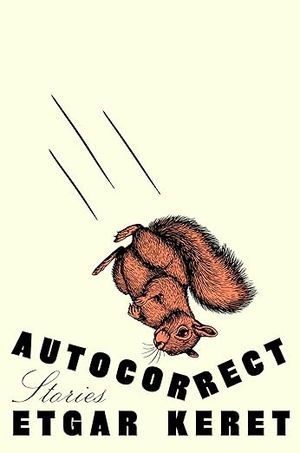 Autocorrect by Etgar Keret, translated by Jessica Cohen and Sondra Silverston (May 27)If you’re looking for a collection of darkly funny stories, this cover is not going to steer you in the wrong direction. It’s a squirrel that’s clearly been launched right into the book title, and he looks completely unfazed by it all. There’s a lot of nice movement in this design, especially as it is very simplistic. |
Sign up to become an All Access member for only $6/month and then click here to read the full, unlocked article. Level up your reading life with All Access membership and explore a full library of exclusive bonus content, including must-reads, deep dives, and reading challenge recommendations.



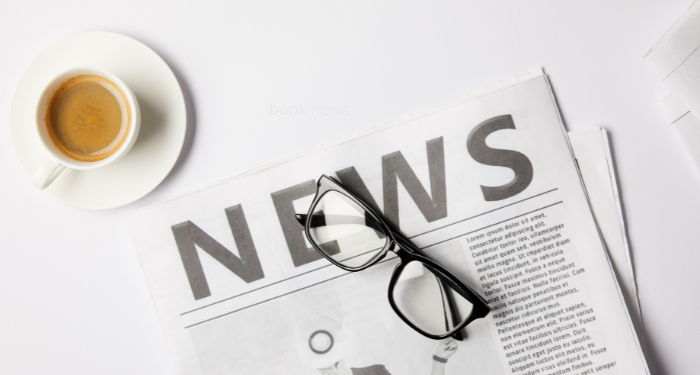
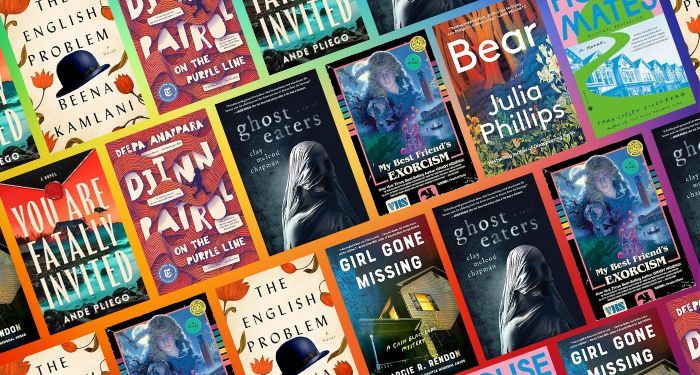
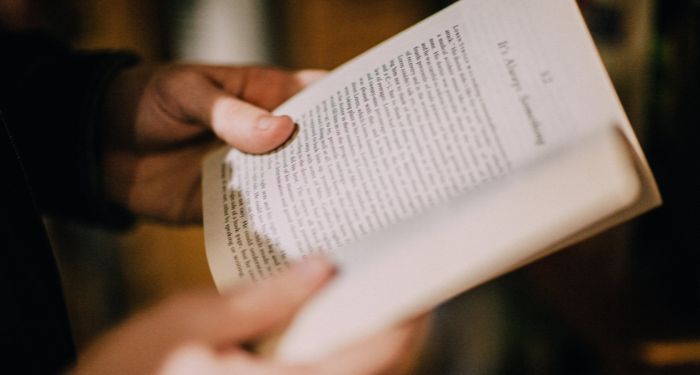







 Bengali (Bangladesh) ·
Bengali (Bangladesh) ·  English (United States) ·
English (United States) ·